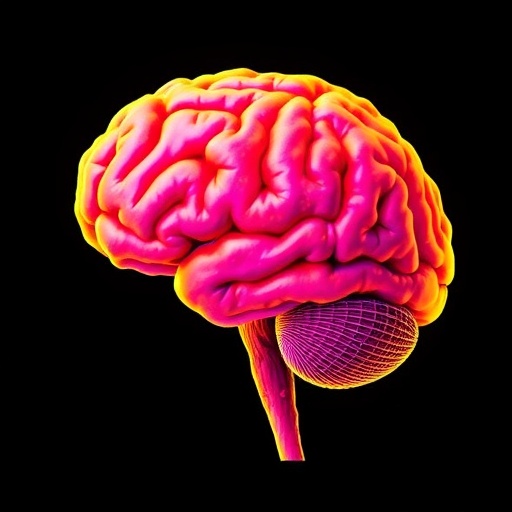In a groundbreaking study published in Translational Psychiatry this November, a team of neuroscientists and developmental psychologists has illuminated new pathways in understanding the origins of autistic traits by focusing on perinatal brain growth. The research, led by Tsompanidis, A., Chang, K.M., Khan, Y.T., and colleagues, meticulously charts the developmental trajectories of brain regions during the critical perinatal period, revealing profound associations with behavioral outcomes observed in toddlers exhibiting autistic characteristics. This study promises to redefine early diagnostic approaches and intervention strategies in autism spectrum disorders (ASD).
The core of this research lies in the temporal window surrounding birth, a phase known as the perinatal period, wherein the human brain undergoes rapid and complex morphological changes. Previous literature has suggested that neurodevelopmental disorders such as ASD could have their roots in this formative stage, yet direct empirical evidence has remained scarce. Through the use of advanced magnetic resonance imaging (MRI) techniques alongside sophisticated analytic models, the team quantified volumetric growth patterns in key brain regions and correlated these metrics with standardized assessments of autistic traits in early childhood.
One of the fundamental revelations of the study is the identification of specific brain regions whose growth trajectories are predictive of later autistic behaviors. These include the amygdala, responsible for processing emotions and social signals, and the prefrontal cortex, implicated in executive functions and social cognition. The data demonstrated that aberrations in the typical volumetric increase of these structures during the perinatal period were significantly associated with higher scores on autism trait assessments at 24 months of age. This temporal association underscores the potential of early brain imaging biomarkers as tools for preemptive identification of autism susceptibility.
The methodology employed in this research incorporated longitudinal brain imaging on a cohort of neonates, who were subsequently followed into toddlerhood, enabling a dynamic view of brain maturation. This longitudinal design is pivotal, as it overcomes the limitations of cross-sectional studies that cannot capture individual growth trajectories. The incorporation of a large and demographically diverse sample also enhances the generalizability of findings, crucial for establishing robust developmental models that transcend population-specific variables.
Technological advancements played a significant role in enabling this research. High-resolution MRI coupled with machine learning algorithms for image segmentation and volumetric analysis provided precise quantification of subtle differences in brain morphology. The automated extraction and classification of brain regions reduced human bias and increased the reproducibility of measurements, setting a new standard in pediatric neuroimaging studies focused on ASD.
Intriguingly, the study also explored the influence of perinatal factors such as birth weight, gestational age, and maternal health indicators on brain development and subsequent autistic traits. Adjusting for these variables, the authors found that while these factors contribute to overall developmental outcomes, the specific growth patterns of certain brain structures remain robustly predictive of autistic phenotypes. This finding suggests an intrinsic neurobiological substrate for autism, which could be modulated but not solely dictated by perinatal environmental factors.
Biological mechanisms underlying the associations observed implicate disruptions in neuronal proliferation, migration, and synaptic pruning processes that are intensively active during the perinatal period. Dysregulation in these cellular and molecular processes could alter circuit formation in brain networks crucial for social behavior and cognitive flexibility. The study’s discussion integrates insights from genetic studies, postulating that gene-environment interactions during perinatal neural development critically shape ASD risk profiles.
This research has profound implications for early intervention paradigms. The identification of neuroanatomical markers predictive of ASD traits months before behavioral manifestations arise paves the way for pre-symptomatic diagnosis. Early detection could enable the deployment of targeted therapies designed to harness neuroplasticity during early brain development, potentially mitigating the severity of autistic manifestations and improving long-term functional outcomes.
Importantly, the findings contribute to the ongoing debate in neuroscience concerning the timing of neural disruptions contributing to autism. By pinpointing a perinatal timeframe for critical brain growth alterations, the study suggests that some ASD-related neurodevelopmental abnormalities are established well before overt symptoms surface, challenging models that emphasize postnatal experiential factors as primary drivers.
The authors also note the ethical dimensions inherent to early neurodevelopmental screening, emphasizing the necessity of balancing the benefits of early diagnosis with the risks of stigma and undue anxiety for families. They advocate for the development of counseling protocols and support frameworks to accompany the implementation of neuroimaging-based screening tools, ensuring holistic care that respects individual differences and family contexts.
Furthermore, this study opens multiple avenues for future research. The team highlights the potential for multimodal imaging approaches integrating functional MRI and diffusion tensor imaging to map not only structural but also connectivity alterations. Such integrated analyses could yield a more comprehensive understanding of how brain network dynamics in the perinatal period relate to ASD phenotypes.
The study also invites exploration into environmental interventions during pregnancy aimed at optimizing fetal brain development. Nutritional, pharmacological, or lifestyle modifications targeting maternal health could conceivably influence perinatal brain growth trajectories, offering preventive strategies against neurodevelopmental disorders. Translating these insights into clinical practice will require interdisciplinary collaborations spanning neuroscience, obstetrics, pediatrics, and public health.
In conclusion, the pioneering work of Tsompanidis and colleagues represents a transformative contribution to the field of developmental neuroscience and autism research. By delineating how perinatal brain growth trajectories predict autistic traits in toddlers, this study not only advances scientific knowledge but also charts a course toward earlier and more precise diagnosis, preventative strategies, and personalized therapeutic avenues. As the prevalence of ASD continues to rise globally, such innovations are vital to improving the welfare and outcomes for affected individuals and their families.
Subject of Research: Perinatal brain growth patterns and their relationship with autistic traits in toddlers.
Article Title: Perinatal brain growth and autistic traits in toddlers.
Article References:
Tsompanidis, A., Chang, K.M., Khan, Y.T. et al. Perinatal brain growth and autistic traits in toddlers. Transl Psychiatry 15, 474 (2025). https://doi.org/10.1038/s41398-025-03665-0
Image Credits: AI Generated
DOI: 10.1038/s41398-025-03665-0 (17 November 2025)




